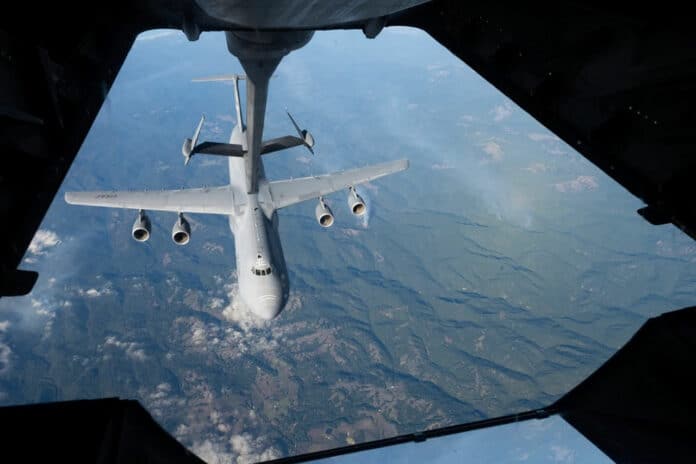The U.S. Air Force (USAF) has successfully tested a reverse flow aerial refueling technique, in which a transport aircraft transfers jet fuel to a tanker.
The test involved a Lockheed Martin C-5M Super Galaxy and a Boeing KC-10 Extender aerial refueling jet and took place over northern California and Oregon on December 12th. The unique aspect of this technique is that the tanker connects to the transport aircraft via a refueling boom. However, the tanker takes on gas from the transport to top off its own onboard supply instead of offloading fuel to the transport like in standard operations.
The reverse flow method allows a tanker aircraft to refuel itself without needing another tanker aircraft. The reverse flow approach would be more efficient and allow for more tanker aircraft to be available for other missions.
“By using a C-5 as a huge floating gas station, it allows more tankers to be positioned for offloading to fighter or mobility aircraft, versus having to use one tanker to refuel another, which takes away a tanker asset from the mission,” said U.S. Air Force Maj. Justin Wilson, 22nd AS chief of standards and evaluations and C-5M evaluator pilot. “This allows more tanker aircraft in the theatre and extends their range or orbit time.”
During the evaluation, a C-5M pumped 23,500 lb (10,700 kg) of fuel to a KC-10 in approximately 30 minutes.
This was the first time the C-5M was used like this since its initial testing and certification. Wilson reported that the aircrew was able to collect valuable data points during the tests that can be utilized in the future to enhance the range and capabilities of a tanker aircraft.
“By doing reverse air refueling, the aircraft is getting lighter at a quicker rate than if you were just flying normally, so the aircraft flies a little differently,” said Wilson. “The real difference is when it comes to the flight engineers.”
“To execute the reverse air refuel, we made amendments to two of our normal checklists,” said Tech. Sgt. Robin Ogg, 60th Operations Group C-5M senior evaluator flight engineer. “These changes were in the flight engineer’s fuel panel configuration to set us up to give fuel versus receiving it.”
